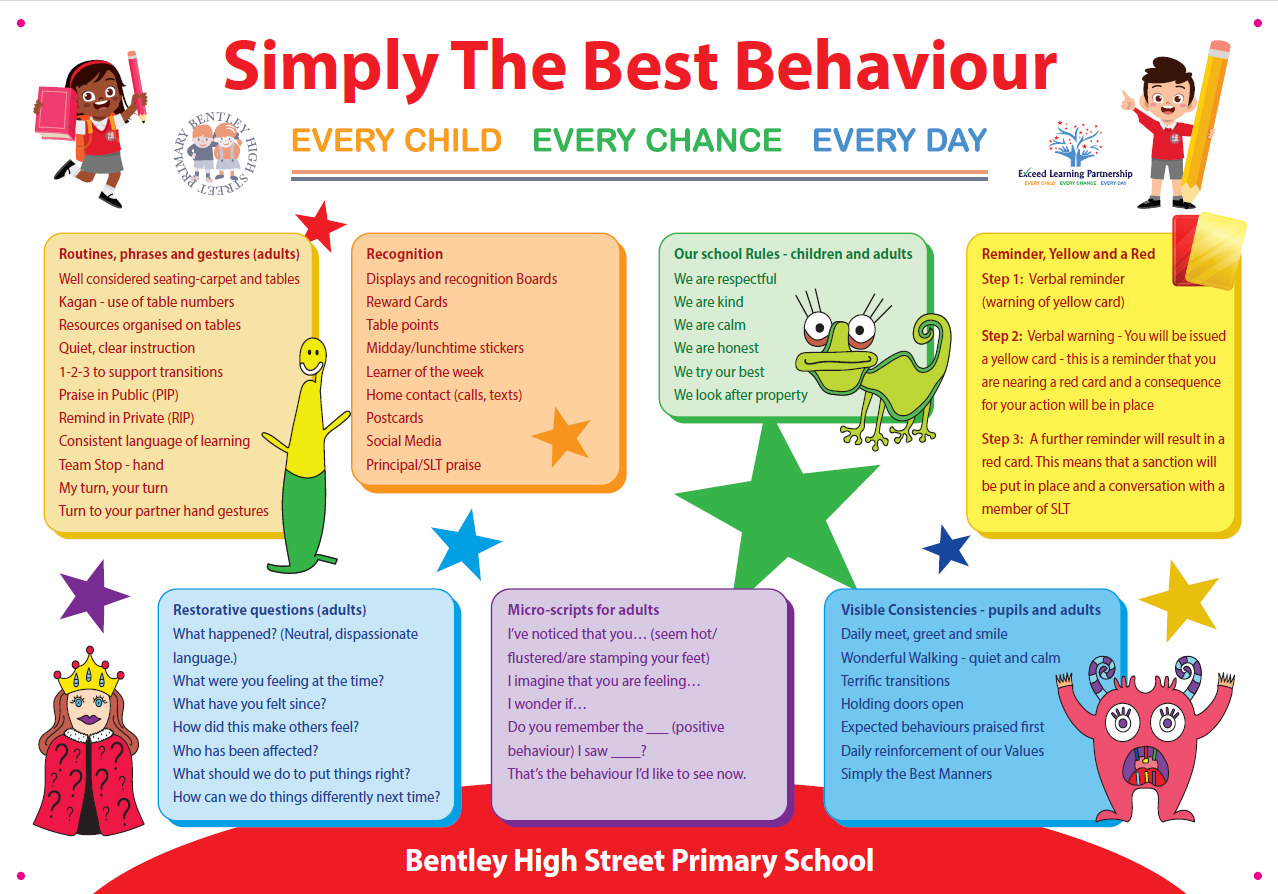Promoting Good Relationships & Behaviour
Behaviour Curriculum
Behavior is taught and not caught. This means that children should be taught how to behave and follow school expectations. Whilst the behavior policy outlines how behavior is managed, this document outlines how behavior is taught. This enables the establishment of a school culture where pupils and staff flourish.
It outlines the knowledge that should be taught:
- Routines and expectations
- Development of learning pedagogy.
Teachers should ensure that core knowledge is taught progressively so that all pupils know what good behaviour looks like. Some pupils may need additional support to reach the expected standard of behaviour. As stated within the behaviour policy, these children should be identified and offered additional intervention and support. However, as with any curriculum, targets should be developed and build progressively from their starting points. Therefore individual targets should be developed using this curriculum. The behaviour curriculum defines the expected behaviours in school, rather than a list of prohibited behaviours. The curriculum shows what successful behaviour looks like. The behviour curriculum includes the development of learning pedagogy. As identified in the EEF guidance report, teaching learning behaviours reduces the need to manage misbehavior. Teachers can provide the conditions for learning behaviours to develop by ensuring pupils can access the curriculum, engage with lesson content and participate in their learning. Teachers should encourage pupils to be self-reflective of their own behaviours
Intent
1. Creation of school culture where staff and children flourish safely and with dignity.
2. All children are aware of what positive behaviour looks like.
3. Enable pupils to be self-reflective of their own behaviours
4. When pupils do misbehave, schools should be able to respond promptly, predictably and with confidence to maintain a calm, safe learning environment.

Dealing with concerns
